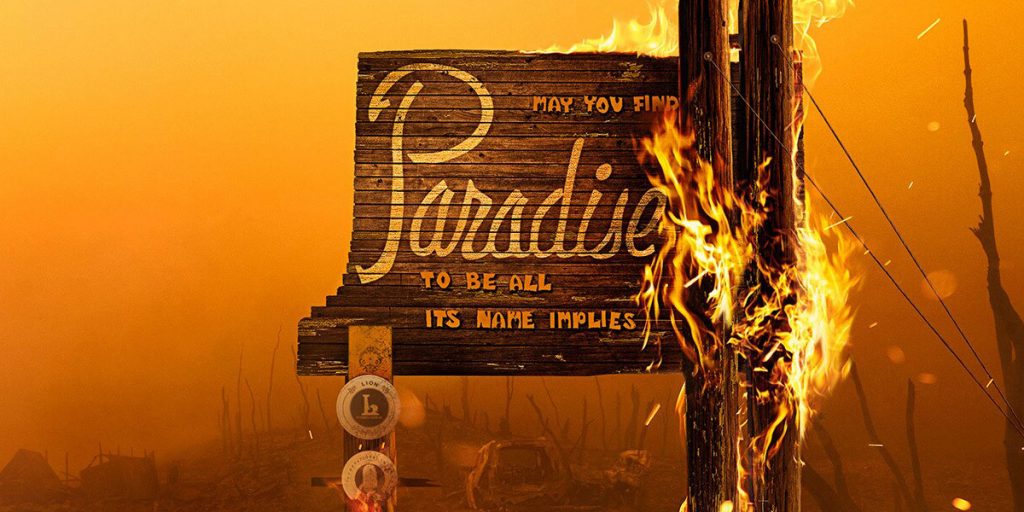Rebuilding Paradise delivers a visceral cinema verité look at the wildfires that devastated a California town, and the town’s effort to rebuild.
Rebuilding Paradise is Ron Howard’s documentary about the wildfire which ravaged Paradise, California in 2018 and the community’s effort to rebuild the town afterwards. The film opens with a visceral, harrowing composition of the fire ravaging the town. The imagery is nothing short of a hellscape reminiscent of the most horrific of medieval artistry. Compiled from cell phone footage, newsreels, dash cams, and anything else the film crew could get its hands on, Howard has crafted a truly staggering artifact of the impact of an uncontrolled wildfire.
The film picks up by following a few individuals in town over the next year or so as they endeavor to rebuild Paradise despite the loss of homes for approximately 50,000 residents. The subjects – a cop, a school guidance counselor, and a former mayor among them – appear to craft a representative sample of the town’s populace and make for reasonably compelling talking heads. Most compelling is the guidance counselor who must overcome her own fire trauma to help guide the remaining Paradise High School students through their own fraught situations.
Ron Howard, well known for the sort of broadly satisfying filmmaking oft recognized by the Academy Awards and best exemplified by films like Apollo 13 and A Beautiful Mind, has seen a lovely hidden skill arise in recent years: the man is a gifted documentarian. His previous work includes compelling, albeit conventional, documentaries on the early years of The Beatles and a biography of Luciano Pavarotti. Rebuilding Paradise continues his ascension in non-fiction narrative.
Howard largely keeps the film apolitical. His modest jabs into the situation’s underlying politics, however, are effective and illustrative: Governor Gavin Newsom, then Lieutenant Governor, is depicted as a competent, compassionate leader while Trump is seen repeatedly calling the town “Pleasure” instead of “Paradise.” Par for the course for both men. One fascinating moment sees a downtrodden PSE&G representative – the company was held largely liable for the cause of the fire – have to field questions from a town distraught over the loss of more than 80 neighbors. It is an eye-opening window into the public grieving process of the town.
Global warming is necessarily a constant background consideration. The film’s most effective jaunt into science focuses on a retired smokejumper frightfully describing the reality of climate change on the California environment. He crisply details how just one single degree of temperature difference has a monumental effect on a fire’s ability to spread.
All told, Howard has constructed a crisp, fast moving, and uplifting story about a community’s effort to return to normalcy after great tragedy. And yet, this is an odd movie to watch in the post-COVID world. It should come as no surprise, considering Ron Howard’s oeuvre and the film’s explicit title, that the movie ends on a hopeful note. Yet I am incapable of divorcing the reality of viewing Rebuilding Paradise from the world in which we currently live. There is something sort of enervating about seeing the notes of hope and regrowth shown here, knowing that the withering effects of COVID-19 and the cultural focus on systemic racial injustice are looming on the horizon for Paradise, California.
Rebuilding Paradise premiered at the Edinburgh Film Festival at Home on 29 June, and is now available to watch on Curzon Home Cinema. It will be out in select US cinemas on 31 July.

